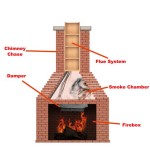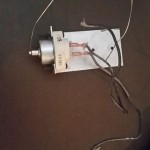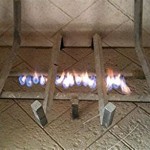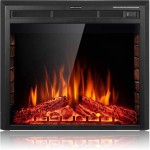```html
Gas Fireplace Rocks: Enhancing Aesthetics and Performance
Gas fireplaces offer a convenient and efficient alternative to traditional wood-burning fireplaces. A crucial element in many gas fireplace designs is the use of fireplace rocks. These rocks not only enhance the aesthetic appeal of the fireplace but also contribute to its performance and heat distribution. Selecting the right type of gas fireplace rocks requires careful consideration of factors such as material, size, shape, and safety.
The primary function of gas fireplace rocks, beyond their visual contribution, is to provide a surface area that radiates heat. The flames from the gas burner heat the rocks, which then emit radiant heat into the room. This radiant heat is more efficient than simply heating the air, as it directly warms objects and people in the vicinity. The even distribution of rocks around the burner ensures consistent heat output and prevents hot spots that could potentially damage the fireplace components.
Proper installation and maintenance of gas fireplace rocks are essential for ensuring both safety and optimal performance. Incorrect placement can impede airflow to the burner, leading to incomplete combustion and the production of carbon monoxide, a hazardous gas. Regular inspection and cleaning are necessary to remove soot and debris buildup, which can also affect combustion efficiency and potentially pose a fire hazard.
Understanding Different Types of Gas Fireplace Rocks
The market offers a variety of gas fireplace rocks, each characterized by distinct properties and aesthetic features. The choice of rocks depends on the desired look, fireplace design, and individual preferences. Some of the most common types include lava rocks, ceramic rocks, and glass rocks.
Lava Rocks: These rocks are formed from cooled molten lava and are known for their porous texture and natural appearance. Lava rocks are excellent at distributing heat evenly, and their dark, earthy tones create a rustic and organic feel. The porous nature of lava rocks allows them to absorb and release heat slowly, providing consistent warmth over an extended period. However, they can be prone to crumbling over time, especially if exposed to excessive heat or moisture.
Ceramic Rocks: Ceramic rocks are manufactured from clay and other materials and are designed to withstand high temperatures. They come in a variety of shapes, sizes, and colors, offering greater design flexibility compared to lava rocks. Ceramic rocks are also more durable and less likely to crumble, making them a longer-lasting option. They are often designed to mimic the appearance of natural stones, such as river rocks or pebbles. The consistent density of ceramic rocks ensures uniform heat distribution.
Glass Rocks: Glass rocks, also known as fire glass, are made from tempered glass that is specifically designed for use in gas fireplaces. They are available in a wide range of colors and shapes, from smooth, rounded beads to sharp, angular shards. Fire glass reflects the flames beautifully, creating a dazzling and modern look. It is also very durable and resistant to fading or discoloration. However, fire glass does not radiate heat as effectively as lava rocks or ceramic rocks. Its primary function is aesthetic rather than functional in terms of heat output.
When choosing between these types, it is crucial to consider the BTU rating of the fireplace and the manufacturer's recommendations. Using the wrong type of rock can potentially damage the fireplace or create a safety hazard. It's also important to purchase rocks from a reputable supplier to ensure they are specifically designed for gas fireplace use and are free from contaminants.
Proper Installation and Placement of Gas Fireplace Rocks
The correct installation of gas fireplace rocks is crucial for the safe and efficient operation of the fireplace. Improper placement can obstruct airflow, leading to incomplete combustion and the production of harmful gases. Adhering to the manufacturer's instructions regarding placement and quantity is paramount.
Before installing the rocks, ensure the gas supply is turned off and the fireplace is completely cool. Clean the burner area thoroughly to remove any debris or dust. Consult the fireplace's user manual for specific instructions on rock placement. Generally, the rocks should be arranged around the burner in a way that allows for proper airflow. Avoid covering the burner ports completely, as this can stifle the flame and lead to carbon monoxide buildup.
The rocks should be arranged in a single layer, ensuring that they are evenly distributed around the burner. Avoid stacking the rocks too high, as this can restrict airflow and reduce heat output. Start by placing the larger rocks around the perimeter of the burner and then fill in the gaps with smaller rocks. The goal is to create a visually appealing arrangement while maintaining sufficient airflow to the burner.
After the rocks are in place, carefully turn on the gas supply and ignite the fireplace. Observe the flame pattern to ensure it is burning evenly and efficiently. If the flame is flickering excessively or producing soot, it may indicate that the rocks are obstructing airflow. In this case, rearrange the rocks to improve ventilation. Never attempt to adjust the rocks while the fireplace is in operation. Always turn off the gas supply and allow the fireplace to cool down completely before making any adjustments.
Maintaining Gas Fireplace Rocks for Optimal Performance and Safety
Regular maintenance of gas fireplace rocks is essential for maintaining their aesthetic appeal and preventing potential safety hazards. Over time, the rocks can accumulate soot, dust, and debris, which can affect their ability to radiate heat and potentially lead to incomplete combustion. Cleaning the rocks regularly will ensure optimal performance and safety.
At least once a year, or more frequently if the fireplace is used regularly, remove the rocks and clean them thoroughly. Before removing the rocks, ensure the gas supply is turned off and the fireplace is completely cool. Use a soft brush or vacuum cleaner to remove loose dust and debris from the rocks. For more stubborn soot deposits, wash the rocks with a mild soap and water solution. Rinse them thoroughly and allow them to dry completely before placing them back in the fireplace.
Inspect the rocks for any signs of damage, such as cracks or crumbling. Replace any damaged rocks immediately, as they can pose a safety hazard. Check the burner area for any signs of corrosion or damage. If you notice any problems, contact a qualified technician to inspect and repair the fireplace. It is also important to schedule regular professional maintenance of the gas fireplace to ensure it is operating safely and efficiently. A qualified technician can inspect the gas lines, burner, and ventilation system to identify and address any potential issues.
Proper maintenance and care of gas fireplace rocks will not only extend their lifespan but also ensure the safe and efficient operation of the fireplace. By following these guidelines, homeowners can enjoy the warmth and beauty of their gas fireplace for years to come.
```
Manchester Oak Gas Logs Cyprus Air Fireplaces Va Md Dc

Lava Rock Vs Fire Glass Blog Fireplace And Chimney Authority

Chaska 34 Rock Kozy Heat Fireplaces

Fireplaceinsert Com Peterson Real Fyre Vented Contemporary Gas Set River Rocks

Enviro S Gas C44 Linear Fireplace

We Will Be Updating Our Fireplace To Use Glass Rocks Rather Than Logs Outdoor Gas Firepit That Fire

Fire Pit Glass Everything You Need To Know

Lava Rock Vs Fire Glass Blog Fireplace And Chimney Authority

Fireplaceinsert Com Peterson Real Fyre Vented Contemporary Gas Set River Rocks

25 Fireplace Decorating Ideas With Gas Logs Electric And Glass Rocks Fire
Related Posts








